#ContentWithPurpose
Explore tagged Tumblr posts
Photo
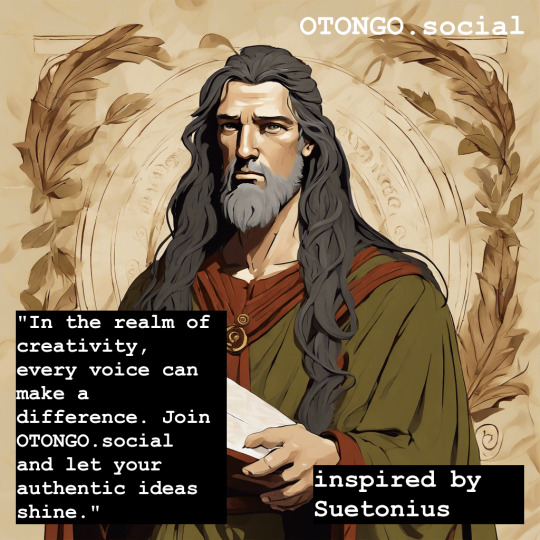
Suetonius was a Roman historian known for his biographical works, particularly about the lives of the Roman emperors.. Get motivated to create content with www.OTONGO.social -> waitlist open.
#ContentCreation#Authenticity#OTONGOSocial#SocialMedia#VoiceThatMatters#RealPhotography#EngageCreatively#ShowYourVoice#BrandIdentity#CreateOriginalContent#ContentWithPurpose#JoinTheWaitlist#TransformYourContent#CaptureAuthenticity#SocialMediaInnovation#VoiceAndImage#FutureOfContent#CreativeCommunity#OriginalIdeas#InspireAndCreate
2 notes
·
View notes
Text
Harsha Bharti Quill is a personal blog space where creativity meets clarity. From thoughtful reflections and inspiring stories to insights on marketing, sales, and entrepreneurship, this blog is a window into Harsha's experiences, ideas, and growth journey. Perfect for readers who enjoy meaningful content, practical wisdom, and a touch of creativity.
#HarshaBhartiQuill#PersonalBlog#CreativeWriting#MarketingInsights#LifeReflections#BloggersOfIndia#ContentWithPurpose#InspiringWords#MBALife#DigitalMarketingTips#WritingCommunity#BloggingJourney#ThoughtLeadership#HarshaBhartiWrites#QuillAndWisdom#WomenInMarketing#MotivationalBlogs#StorytellingMagic#CareerAndGrowth#EverydayInspiration
1 note
·
View note
Text
Linking Instagram Strategy to Core Business Goals for Growth

In today’s digital-first world, Instagram is more than a place to post eye-catching visuals—it’s a platform that can fuel your brand’s mission, build lasting customer relationships, and support real business growth. However, while many businesses are active on Instagram, very few truly align their Instagram content with their overall brand goals. The result? Disconnected content, unclear messaging, and minimal return on investment.
To create lasting impact, you need a strategy that links your Instagram efforts directly to your core business objectives. Every post, Story, or Reel should work toward achieving measurable outcomes��whether it’s increasing awareness, generating leads, or boosting loyalty.
In this blog, we’ll break down how you can craft an Instagram strategy that contributes to business growth while staying true to your brand identity.
Why Aligning Instagram Strategy with Brand Goals Matters
Treating Instagram as a standalone channel is one of the most common mistakes brands make. When your Instagram content doesn’t reflect or support your larger business goals, you risk wasting time, energy, and marketing budget. Aligning both ensures:
Greater clarity in content creation
Consistent messaging across platforms
Efficient use of marketing resources
Better ROI and business impact
Your Instagram shouldn’t just “look good”—it should help move your brand forward.
Step 1: Start with Your Core Business Objectives
First, identify your high-level business goals. Ask yourself what your brand is trying to achieve in the next quarter or year. Common goals might include:
Increasing brand awareness
Driving leads or conversions
Boosting product or service sales
Strengthening brand positioning
Retaining customers and improving loyalty
Expanding into new markets or audiences
Being clear on these goals helps you create a foundation for your Instagram content strategy.
Step 2: Set Instagram Goals That Support Your Business Objectives
Once you know what your business is trying to achieve, translate those goals into Instagram-specific targets. These goals should be SMART—Specific, Measurable, Achievable, Relevant, and Time-bound.
For example, if your business goal is to increase brand awareness, your Instagram goal could be to grow your follower count by 5,000 in three months. If your goal is lead generation, aim to drive 300 clicks to a lead magnet via Instagram Stories in 30 days.
This process ensures you’re not just posting randomly—you’re working toward tangible business results.
Step 3: Identify the Right Target Audience for Each Goal
Every business goal may require engaging with a different segment of your audience. For instance:
If your goal is to boost sales, focus on warm leads or returning customers
For brand awareness, target new users, locations, or demographics
For loyalty, connect with your most engaged followers and brand advocates
Using Instagram’s built-in analytics and insights tools, you can segment your audience and tailor content specifically to each group. This level of personalization leads to more meaningful engagement and better outcomes.
Step 4: Match Content Types to Your Business Objectives
Not all Instagram content serves the same purpose. You need to match each format with the right goal.
To increase brand awareness, prioritize Reels, carousel posts, and strong hashtag strategies. Reels, in particular, are highly discoverable and can help your brand go viral. Carousel posts are great for educational or informative content that users save and share.
To generate leads, use Instagram Stories with link stickers, lead magnets, and gated content offers. Story polls and quizzes are also effective for interacting while subtly gathering user data.
If your focus is on sales, make use of Instagram Shop features and tag products in your posts and Stories. Create short product demo Reels and highlight customer reviews to build trust and drive conversions.
To build customer loyalty and engagement, post behind-the-scenes content, team spotlights, user-generated content, and run regular Q&As or Lives to foster a two-way connection with your community.
When each content format has a defined purpose, your entire feed becomes more strategic.
Step 5: Optimize Your Instagram Bio and Highlights
Think of your Instagram bio as your business card and storefront—it should clearly communicate what your brand is about and guide users toward action.
Start with a clear value proposition. Tell people exactly what you offer and why it matters. Use a strong call-to-action and include a trackable link to a lead magnet, product page, or landing page.
Instagram Highlights are another place to reinforce your brand story. Organize them by themes like “About Us,” “Shop,” “Testimonials,” or “FAQs” to help new visitors navigate your brand. This not only builds trust but also supports various business objectives—whether it's educating prospects or showcasing product benefits.
Step 6: Use the Right Metrics for the Right Goals

Your Instagram performance should be evaluated through the lens of your business goals—not just vanity metrics.
If your goal is brand awareness, track metrics like reach, impressions, and follower growth. For engagement, focus on saves, shares, comments, and DMs. If you're aiming to generate leads, monitor Story link clicks, bio link clicks, and website visits.
To track sales, use Instagram Shop analytics, monitor how often users click on product tags, and measure conversions from Instagram traffic. For customer loyalty, keep an eye on returning visitors, engagement from your core audience, and the frequency of user-generated content.
When you align your analytics with your business goals, it’s easier to prove ROI and adjust your content strategy based on real results.
Step 7: Leverage AI Tools and Insights
AI-powered tools can significantly improve your Instagram strategy by automating tasks, predicting trends, and generating data-backed content ideas.
Use AI platforms like ChatGPT for caption writing and idea generation, Canva AI for design, and Metricool, Later, or Iconosquare for in-depth analytics and competitor tracking.
AI also helps you identify the best times to post, forecast engagement, and fine-tune your hashtag strategy. When used properly, AI tools can help you align your Instagram content with business goals faster and more accurately than manual efforts.
Step 8: Collaborate Across Teams for Brand Consistency
Your Instagram strategy shouldn’t operate in isolation. It should be a cross-functional effort that involves:
The sales team for aligning offers and understanding customer objections
The customer support team for managing DMs and comments
The product or service team for content on new launches or feature updates
Leadership or founders for personal branding and storytelling
This collaborative approach ensures your Instagram voice is consistent with your brand’s broader narrative—and that everyone in the company sees value in social content.
Step 9: Stay Flexible and Iterate Often
The digital landscape is constantly shifting, and so are user preferences. Your strategy must evolve accordingly.
Use Instagram Insights and analytics to evaluate what’s working and what’s not. Be open to testing new content formats like collaborative posts or user-generated content campaigns. Regular feedback from your audience, performance data, and market trends should all influence your next move.
A strategy that adapts is a strategy that survives—and thrives.
Conclusion: Create Purpose-Driven Content That Powers Business Growth
Instagram is no longer just about looking good—it’s about delivering measurable results that support your business.
When your Instagram content aligns with your core business goals, you create a scalable, consistent, and effective brand presence that not only engages audiences but drives growth.
Define your business objectives first
Set Instagram-specific goals that align with those objectives
Match content formats to desired outcomes
Use analytics, AI tools, and team collaboration to stay strategic
Track performance and stay flexible
By following this approach, you ensure that your Instagram efforts go beyond likes and comments and actually contribute to what matters most: the growth of your business.
Click here to learn more about how to align your Instagram content strategy with your overall brand goals.
#digitalzaaenterprises#InstagramStrategy#DigitalBrandGrowth#PurposeDrivenContent#SocialMediaGoals#InstagramMarketingTips#ContentWithPurpose#GrowYourBrand#InstagramForBusiness#MarketingThatConverts#SocialMediaAlignment#BusinessGrowthStrategy#InstagramAnalytics#SmartContentStrategy#AIForMarketing#BrandBuildingOnInstagram
0 notes
Text
HDMS058. Impressions Are Fool’s Gold — Here’s What to Measure Instead
You ever go viral and feel… nothing?
You check your notifications, your views hit six figures, your mom even texts you “saw your little skit!” — and yet… your ticket sales don’t move. Your inbox is dry. Your website’s still a ghost town.
That’s because impressions ≠ impact.
This week’s HDMS post is about measuring earned media without losing your damn mind — especially when you’re a comedian, creator, or indie producer trying to do it all without a marketing degree. We’re breaking down why impressions are the fool’s gold of digital marketing, what actually counts, and how to build a measurement system that doesn’t rely on vibes alone.
This module straight-up dragged the fantasy that impressions = results. Turns out? You can’t measure success by vibes and vanity metrics alone.
Earned media sounds sexy — like, "we got featured!" — but unless it moves people, drives action, or builds long-term trust, it’s just noise. Here’s what I learned:
Impressions are fool’s gold unless they connect to something meaningful (like site visits, sign-ups, or sales).
Self-selection and homophily mess with your data: most people who engage with your earned media already liked you or were in your bubble. That doesn’t mean your brand awareness grew — it might just be echoing in your own hallway.
Most brands can’t track exact causation, so they look at correlation: like “we got mentioned in Fast Company, and then clog sales went up 30%.”
Big brands track stuff like:
Organic website visits
Google search trends
UGC (user-generated content)
Loyalty signups
Earned Media Value (aka: how much ad spend would’ve been needed to reach that many people)
But even then, not all buzz is worth bragging about. Darren from OOFOS said it best: a Slide #53 mention in a Yahoo listicle might have "2M impressions" on paper... but it doesn’t move real people.
Instead, OOFOS puts more weight on small, focused articles that talk about their actual value pillars — recovery, tech, and trust. The goal isn’t to go wide — it’s to go deep with the right people.
This module confirmed something I’ve been feeling for a while: I don’t want to chase hype — I want to build trust.
There’s a huge difference between being seen and being understood. I’ve had content “pop off” before, but unless I had a clear system behind it (like a strong CTA, a lead magnet, or a next step), that moment never turned into anything tangible.
Going forward, I’m focusing on:
Tracking what actually moves people — like link clicks, replies, email signups, and time spent on my site.
Creating a “gut-check” system for myself: Did this post create conversation? Did someone reach out after seeing it? Did it lead to a new connection, ticket sale, or subscriber?
Putting more weight on context-rich moments (like podcast features, comedy roundups, or curated press) instead of viral fluff with no follow-through.
Choosing signal over noise — even if that means fewer likes but better conversion.
As someone who’s self-employed and neurodivergent, I need systems that don’t make me spiral. So if a post gets 500 views and leads to 5 DMs from people who want to work with me? That’s a win. I’m no longer counting “likes” — I’m counting leverage.
If this week’s HDMS post taught me anything, it’s this:
Not all buzz is worth chasing. Impressions are cute, but they don’t pay your bills unless you’ve got strategy behind them. Whether you’re a comedian, creator, or producer — focus on what builds real trust, not just what gets seen.
Measure the stuff that actually means something. Clicks, conversations, conversions. Forget going viral — aim to be remembered.
I hope this post was as helpful to you as it was to me.
Tchau tchauuu!!!
#MarketingForComedians#NeurodivergentCreator#HDMS#DigitalMarketingSimplified#EarnedMediaStrategy#MeasuringImpact#ContentWithPurpose#NotJustVibes#CreativeEntrepreneur#TrustOverTrends
0 notes
Text

The power of content is not just in sharing knowledge but in creating connections. Make your mark with engaging content! 🌐💬
#QualityContent#ValuableContent#ContentWithPurpose#EducationalContent#InformativeContent#ContentThatInspires#ContentImpact#ContentForBusiness#ContentCreation#ContentMarketing#ContentStrategy#ContentWriting#ContentTips#ContentMatters#ContentExperts#ContentGoals#ContentLife#CreateContent
0 notes
Text
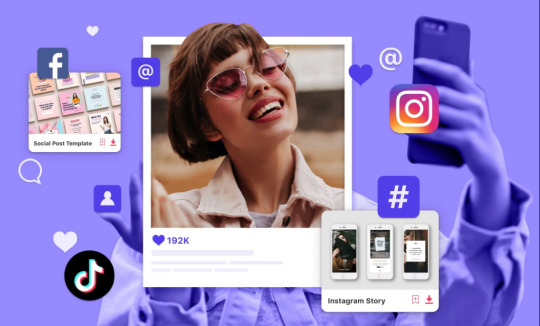
Incorporating Storytelling in Influencer Marketing Copy: Techniques for Deeper Engagement
Introduction to Storytelling in Influencer Marketing
Storytelling in influencer marketing refers to using narrative techniques to create compelling and relatable content. This method goes beyond traditional marketing tactics by building an emotional connection with the audience, leveraging the power of stories to make brands more human and relatable.
Understanding Your Audience and Aligning Brand Stories
The first step in successful storytelling is understanding your audience. Knowing their interests, pain points, and motivations enables you to craft stories that resonate deeply with them. Additionally, aligning your brand story with your influencer's story ensures authenticity and enhances the impact of the narrative.
Techniques for Effective Storytelling
Visual and Multimedia Elements: Incorporating visuals like photos, videos, and animations can significantly enhance the storytelling experience, making it more engaging and memorable.
Customer Testimonials: Using real customer testimonials in your story adds social proof, building credibility and trust in your brand.
The Hero's Journey: Adapting the classic hero's journey structure to influencer marketing campaigns, where the customer overcomes challenges with the help of your brand, can be particularly effective.
Incorporating Emotions: Decide the emotional response you want to evoke in your audience, whether humor, inspiration, or sentimentality, and tailor your content accordingly.
Blend Storytelling and SEO: Creating user journeys and narratives that connect with readers while satisfying search engine criteria can increase engagement and improve ranking.
Long-Term Approach and Measuring Success
Storytelling is a long-term strategy involving ongoing relationships with influencers who can continuously narrate your brand's story. Measuring the success of storytelling efforts is crucial, and this can be done by tracking engagement, reach, conversions, and sentiment.
Incorporating storytelling into influencer marketing allows brands to deepen their connection with their audience, differentiate themselves, and establish trust. By understanding the science behind storytelling and employing effective techniques, brands can create content that engages, inspires, and drives action. The key lies in crafting authentic stories that resonate with the audience personally and measuring these narratives' impact to refine the approach continually.
#StorytellingInMarketing#InfluencerEngagement#BrandStorytelling#InfluencerMarketingTips#EmotionalMarketing#ContentWithPurpose#NarrativeBranding#EngagingStories#InfluencerImpact#AuthenticInfluencing
0 notes
Text

Taking a moment to reflect, so we can keep progressing. Looking back gives us clarity on where we’ve been, but the real power lies in how we use those experiences to grow. Young women with a strong character build resilience and are better prepared for the future. #Throwback #Emberhart #MindsetShift #LifeSkills #PersonalGrowth 🌟 #EmpowerHer #GirlDad
1 note
·
View note
Text
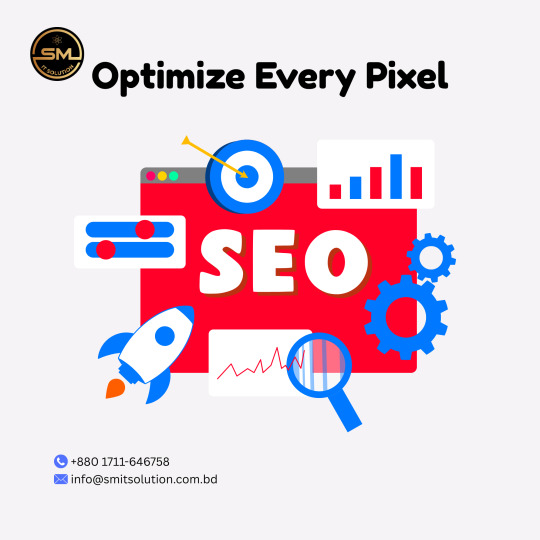
Our On-Page SEO Services go beyond keywords—we fine-tune every tag, heading, and paragraph for peak performance.
🧠 Content optimization. 📌 Tag & meta structure. 🧭 Internal linking strategy.
#OnPagePower #SEOFromWithin #SMITSolution #OptimizeAndWin #SearchReadyPages #ContentWithPurpose
0 notes
Text

Most people only scratch the surface when niching down—focusing on basic demographics.
But real impact happens when you go deeper.
I’m talking psychographics, emotional triggers, even neuroscience 🧠
Take my wife, for example.
She just launched her brand and podcast, Taboo Talk with Sarah 🎙️—diving into the mental wellness space. Her niche?
Moms like her—raising kids with ADHD, autoimmune conditions, MS, and more.
She is her audience. That’s the power of truly understanding who you serve.
Don’t just define your audience.
Be them.
Feel them.
Serve them.
#MentalHealthMatters #NicheDown #PodcastLaunch #WomenInWellness #ADHDAwareness #AutoimmuneSupport #TabooTalkWithSarah #ContentWithPurpose #AuthenticBranding #MomLife #NeuroscienceMarketing
1 note
·
View note
Text
HDMS033. The Art of the Soft Sell: Native Advertising for Comedy Careers
You’ve probably seen a native ad today without realizing it. That skincare article you clicked on from Vogue???? Sponsored by a serum brand!!!! That Spotify playlist that magically matched your mood and promoted a Netflix show???? Yep, that too!!!!
Unlike traditional ads that practically shout “HEY YOU! BUY THIS THING!”, native advertising blends in. It looks and feels like regular content—something you’d want to read or watch anyway—but behind the scenes, it’s doing the job of selling.
And here’s why that matters:
As comedians, creatives, and indie producers, we don’t always have the luxury of a massive advertising budget. But what we DOOOO have is the ability to tell stories, make people feel something, and create content that connects!!!! That is EXACTLYYY what native advertising is built on!!!
So the question becomes: How do we start creating content that doesn’t just entertain—but also quietly sells us, our shows, our podcasts, or our projects—without making people feel like they’re being sold to?????
This Harvard module (3.3.2 Native Ads) introduced native advertising as a way for brands to provide value before asking for anything in return. And that’s something every comedian can borrow. Because when you make people feel something first—laughter, insight, curiosity—they’re far more likely to remember you, follow you, or show up to your next gig.
Let’s talk about what native advertising actually is, why it works, and how we can use it to build comedy careers that grow without shouting. BORA, MULEKE!!!
I. What Native Advertising Actually Is (According to Harvard)
According to module 3.3.2, native advertising is different from traditional display ads in two major ways:
First, it’s designed to blend in with the content around it. It doesn’t look like an ad. It looks like a blog post, an article, a playlist, a story. It wears the same clothes as the platform it lives on.
Second, it exists to offer value first—entertainment, insight, aesthetic vibes, whatever makes it worth your time—before it tries to sell anything.
It’s the opposite of “Buy Now!” energy. It’s “Here’s something interesting—oh, by the way, we made it.”
Harvard gave three examples that made this hit home for me:
The Philippines Tourism Board partnered with the BBC’s travel site to publish a beautiful, immersive photo essay about the country—like a journal entry, not a sales pitch. At the very end, there was a quiet link to learn more.
Allbirds did a native piece on climate change and bird migration. It read like a well-researched, interactive article with visuals and slow color fades. The brand only came in when it made sense.
Netflix and Spotify teamed up to launch custom playlists blending Stranger Things tracks with each user’s top songs, complete with spooky visual effects. It wasn’t an ad. It was an experience that just happened to promote the new season.
That’s the secret: native ads don’t feel like ads. They feel like content you actually want to engage with.
And they work. According to Harvard, native ads are viewed over 50% more than regular display ads, and they get higher click-through rates because people aren’t tuning them out the way they do traditional ads.
But the goal of native advertising isn’t always a click or a purchase. Sometimes it’s just planting a seed—creating a halo effect around a brand. And that’s the part comedians can use!!!!!! You don’t always need to make a hard ask!!!! You just need to LEAVE AN IMPRESSION that makes people want to COME BACK FOR MORE!!!!
II. Why Native Ads Work (And Why They’re HELLA Tricky)
Native ads work because they feel like they belong. They speak the language of the platform they’re on. They’re not trying to disrupt—they’re trying to enhance.
That’s why people engage with them more. They don’t trigger that automatic “ugh, another ad” reaction. Instead, they feel like an article, a playlist, a visual story. And when people actually enjoy the content? They start to like the brand by association. That’s the halo effect.
But here’s the catch: they’re not easy to make, okay??? These bitches be tricky, as I'm coming to learn... But I take it it's part of the process, and just because it's a completely foreign concept to me (or to you) it doesn't mean it isn't worth the effort of learning it and, dare I say, making mistakes too!!! My dad always says that anything worth doing is worth doing poorly. That's how I'm beginning to feel about this "strategic" side of marketing.
So how do we create native ads as comedians???? How do we start??? Well, as far as creating a good native ad, it means doing more than slapping your name on a banner. You have to create something worth consuming. That takes time, it takes strategy, and it definitely takes storytelling... three things that most traditional ad campaigns don’t usually prioritize.
And so this whole thing makes me think that, for brands or comedians without a big team or budget, native advertising can be both a challenge and an obstacle at the same time...
Not to mention that there’s also an ethical layer to this madness. Check this shit out:
Some people argue that native ads are too sneaky (???) and that, by blending in so well, they blur the line between content and advertising in a way that could be misleading. Can the audience really tell what’s sponsored and what’s editorial? Does it matter if they can’t?
Personally, I think it depends on intention and execution. If the content is genuinely valuable and the brand isn’t trying to trick anyone, then native ads can be a more respectful way to engage people. But if it’s manipulative or dishonest? That’s where trust gets lost.
There’s also the issue of scope. Native ads tend to work better for products or experiences that have a vibe, a lifestyle, or an emotional hook. It’s easier to make a beautiful, immersive native campaign about travel, beauty, or wellness than it is about toilet cleaner.
So yes—native ads ARE EFFECTIVE!!!! But they’re also high-effort, high-context, and high-stakes!!!!!! You HAVE to be willing to tell a story that matters, even if the call-to-action is quiet!!!!!
III. What Comedians Can Learn from Native Ads
Here’s the part that really lit something up in my brain: comedians already make native content—we just don’t always think of it that way.
Native advertising is all about creating something engaging that just happens to be aligned with your brand or offering. That’s what we do every time we post a clip that makes people laugh and stick around. Every time we share a story that hits, or a podcast episode that hooks someone emotionally.
The difference is that most comedians stop there. We post the content, hope it goes viral, and cross our fingers that people follow us or buy a ticket. But native ads take it a step further: they’re strategically placed, purposefully written, and quietly promotional.
And that’s the lesson.
As comedians, we can start thinking about our content like native ads—not “Buy tickets now!”, but “Here’s a story you’ll love—and by the way, here’s what I’m up to.”
Some examples of native-style content comedians can use:
Behind-the-scenes stories about producing your own show, ending with a soft CTA like “Come see what we built.”
Mini essays or blog posts reflecting on your worst bomb or best crowd, tied into promoting your podcast episode.
Funny reels or sketches that showcase your style, tone, and worldview—followed by, “You’ll love my stand-up special.”
Podcast guest spots where you’re genuinely being you—offering value, making people laugh—and organically mentioning your next show or project.
The key is this: the content has to stand on its own!!!!! If people would engage with it even without the plug, you’re doing it right!!!!
That’s how you build trust. That’s how you make people curious without begging for their attention. That’s how you turn everyday content into native promotion—and suddenly, your whole feed becomes a soft-sell machine that doesn’t feel like marketing at all.
IV. How I’m Applying Native Advertising in My Own Work
I didn’t call it “native advertising” at the time, but looking back, I’ve been experimenting with soft-sell strategies for a while. Not because I’m some marketing genius—but because I’ve always hated feeling like I was forcing people to care.
So I started creating content that people would actually want to engage with. Content that felt like a diary entry. A confession. A laugh. A secret I was sharing. And then—tucked at the end, or woven subtly throughout—I’d drop the show link, the podcast title, the CTA.
Not because I was hiding the fact that I was promoting something—but because I was leading with value first.
Here’s how I’ve been using native-style thinking in my own career:
Podcast storytelling that doubles as personal brand marketing When I talk about fear, love, or identity on the podcast, I’m not just filling airtime—I’m building a relationship. And if someone connects with that, they’re more likely to come to a show, share an episode, or stay tuned for what’s next. It’s not a hard sell. It’s a soft bond.
Live show themes that offer value beyond just laughs I didn’t want my shows to be just another comedy night. That’s why I created concepts like Haunted Comedians or Failed By Sex Ed—each one is a conversation starter, a niche, a vibe. The theme itself becomes content—it attracts people who are into that subject, and it makes promoting the show feel like sharing a cool idea, not a ticket link.
Blog content and social posts that teach, reflect, or entertain I write pieces like this one to unpack what I’m learning, and in doing so, I’m also marketing my journey. When someone reads about how I’m building a business, taking a risk, or learning through failure—they’re not just watching the show from the outside. They’re invested in the story. And once they’re invested in the story, buying a ticket isn’t a transaction—it’s support. It’s community.
Experiences that feel editorial, but function as subtle promotion Whether it’s a podcast segment, a themed photoshoot, or a behind-the-scenes video, I’ve learned that people want to feel like they’re part of something. So if I can make a piece of content that feels like a window into my world—**not a flyer, not an ad—**then that content becomes a native ad without ever calling itself that.
That’s how I think about it now!!! Not “How do I sell this thing???” but rather “how do I make something people GENUINELY WANT... and let the sale be a NATURAL next step?????”
And that, my friend, is the art of the soft sell :)) and it’s also why native advertising isn’t just for brands with budgets!!! It’s for artists with stories <33 it's for me, it's for you, it's for all of us creatives!!!!
TL;DR + Action Steps for Comedians
Annnnnnnd that was the blog post!!! You've made it to the end!!! So what did we learn??? What even is native advertising???
Native ads are ads that don’t look like ads. They blend into the platform they’re on and actually offer something valuable—like a story, a playlist, a podcast segment, a blog post—before they ever try to sell you anything.
They feel natural, like content you’d click on anyway, you know??? And that’s the point!!! You’re not pushing your thing on people—you’re INVITING them in!!!!
Why It Works (And Why It’s Worth It)
People engage more with native ads because they don’t trigger ad fatigue.
They work well in industries built on aesthetic, emotion, or storytelling—comedy included.
They’re not cheap or fast. They take creative effort, editorial skill, and intentional design. But for comedians? That’s our entire job.
How I’m Using It in My Career
I create shows with themes that spark curiosity and start conversations.
I design podcast episodes and reels that are authentic and funny first, promotional second.
I write blog posts that reflect on what I’m learning—marketing, comedy, identity—and naturally tie in upcoming shows or projects.
I aim to make my content feel like a mini experience, not an ask.
How You Can Start Today (No Ad Budget Needed)
Think value-first. Before promoting something, ask: Would this still be worth sharing even if I weren’t selling anything?
Tell a story. A good native ad is a good narrative. So is a good post. Build emotional connection first.
Use your existing platforms as native ad spaces. Your social feed? Your podcast? Your blog? That’s all prime native ad real estate. You just need to treat it like part of your brand strategy.
Keep the plug soft. You don’t need ALL CAPS + BUY NOW + 48 EXCLAMATION POINTS. End with a gentle nudge. If the content was good, people will want more.
Track what resonates. If a post gets engagement, ask why. Was it funny? Vulnerable? Useful? Reverse-engineer what worked—and do more of that.
Therefore, what I learned in module 3.3.2. Native Ads is that:
You don’t have to scream to sell. You don’t have to beg to be seen. You just have to offer something real, wrap it in your voice, and trust the connection to do the rest.
THAT is native advertising. Also known as THE SOFT SELL. And that’s how comedians grow without burning out OR selling out!!!
I hope this module reflection was as helpful to you as it was to me.
Don't forget to follow me for more posts on the HDMS series!!!
Tchau tchau <3
#ComedyMarketing#NativeAdvertising#StandUpTips#DigitalStorytelling#CreativeMarketing#SoftSellStrategy#ComediansOfInstagram#IndieComedian#ContentWithPurpose#MarketingForCreatives
0 notes
Photo
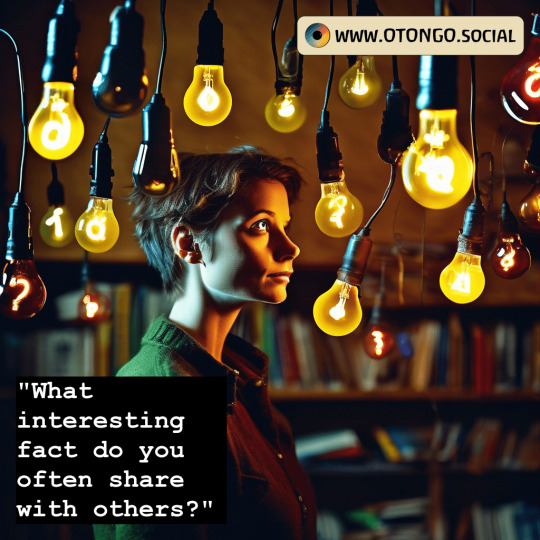
Share interesting facts that can spark conversation and engagement, much like the unique content created on OTONGO.net.
#CuriosityDriven#EngageWithOTONGO#AuthenticContent#ContentCreation#StayOriginal#VoiceAndPhotography#PreserveYourIdentity#HumanTouch#ContentWithPurpose#FutureOfContent#UnleashCreativity#InspiringIdeas#QualityOverQuantity#JoinTheWaitlist#OTONGOcommunity#InnovateWithOTONGO#ContentThatMatters#CaptureYourVoice#SocialMediaRevolution#RealStories
0 notes
Photo
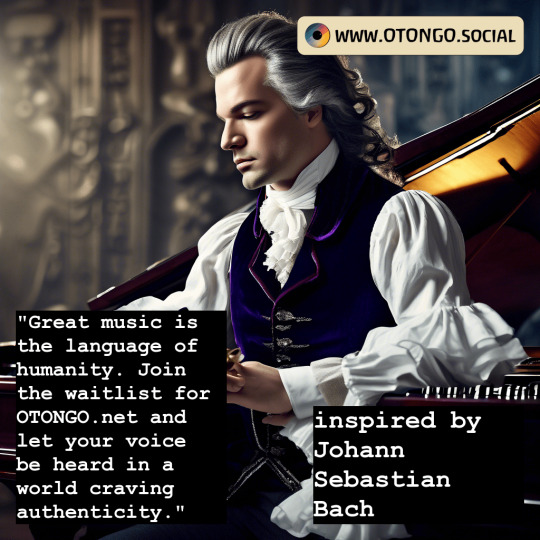
A legendary composer known for his intricate musical compositions and the profound emotional depth encapsulated in his works.. Get motivated to create content with www.OTONGO.social -> waitlist open.
#OTONGO#AuthenticityMatters#ContentCreation#VoiceAndVision#JoinTheWaitlist#CreativeVoice#OriginalContent#SocialMediaInnovation#MusicAndArt#BachInspiration#HumanVoice#CreativeCommunity#DigitalContent#CaptureYourMoment#VisualStorytelling#ContentWithPurpose#PreserveOriginality#EmpowerCreativity#HarmonizeYourVoice#InnovateYourBrand
0 notes
Photo
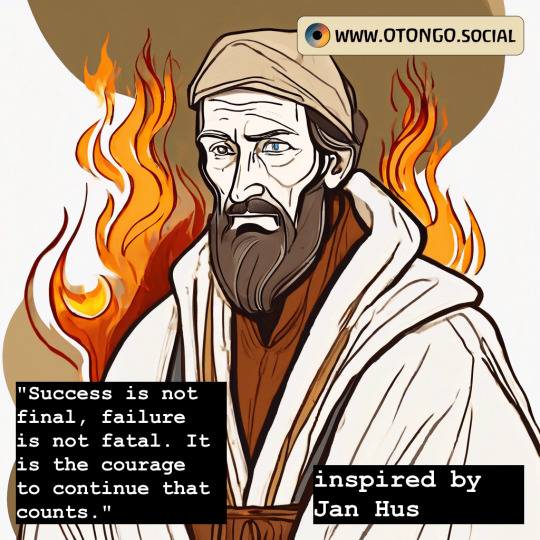
Jan Hus was a Czech theologian and philosopher who played a significant role in the early Reformation, advocating for church reform and clergy accountability.. Get motivated to create content with www.OTONGO.social -> waitlist open.
#ContentCreation#Authenticity#SocialMedia#JoinTheWaitlist#OTONGO#VoiceAndImage#PlatformForCreatives#RealConnections#EmpowerCreators#QualityContent#HumanTouch#SocialImpact#ContentThatMatters#BeOriginal#InnovationInCreation#ElevateYourBrand#CreateWithUs#ContentWithPurpose#VoiceOfTheCreator#VisualStorytelling
0 notes
Photo
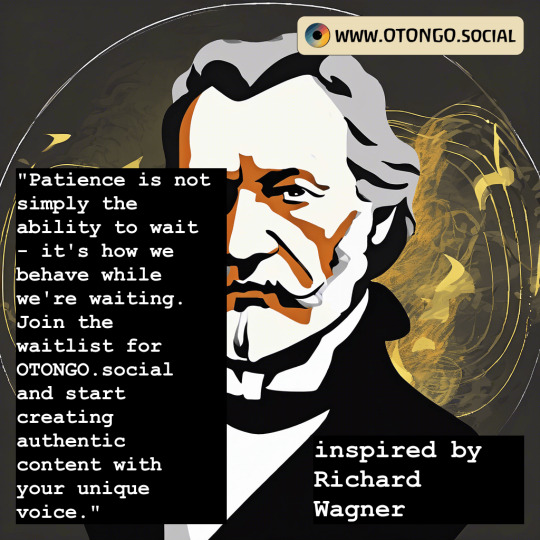
A renowned German composer, theatre director, and conductor known for his influential operas that revolutionized the genre and expressed intense emotion through music.. Get motivated to create content with www.OTONGO.social -> waitlist open.
#OTONGOSocial#ContentCreation#Authenticity#VoiceYourBrand#CaptureYourMoment#JoinTheWaitlist#CreativeCommunity#EmpowerYourContent#BeOriginal#HumanTouch#NextLevelContent#AuthenticImages#ContentWithPurpose#MusicalInspiration#WagnerianWisdom#InnovateYourFeed#VoiceMatters#Storytelling#SocialMediaInnovation#BeHeard
0 notes
Photo
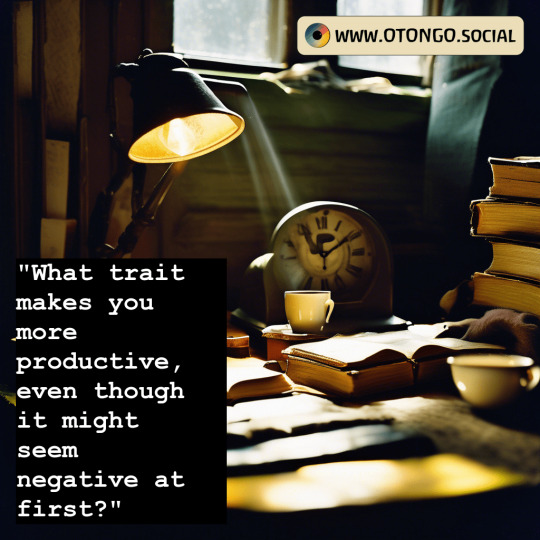
Get motivated to create content with www.OTONGO.social -> waitlist open.
#Productivity#OTONGOSocial#Authenticity#ContentCreation#VoiceOverContent#RealPhotography#BrandIdentity#SocialMedia#Inspiration#CreativeCommunity#HumanTouch#OriginalContent#QualityOverQuantity#Engagement#DigitalPresence#VoiceYourBrand#CaptureTheMoment#SocialImpact#ContentWithPurpose#JoinTheWaitlist
1 note
·
View note
Photo
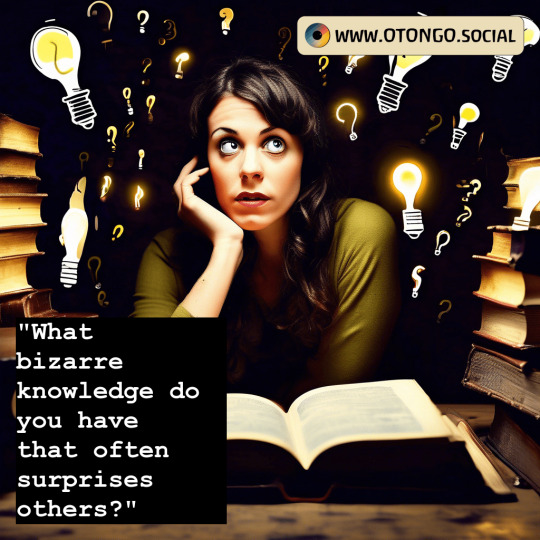
Get motivated to create content with www.OTONGO.social -> waitlist open.
#CuriosityUnleashed#KnowledgeIsPower#ShareYourStory#AuthenticContent#EngageAndInspire#VoiceAndPhotography#CreativeCommunity#TikTokForThought#OTONGO#ContentCreation#UniqueInsights#Storytelling#ContentWithPurpose#HumanTouch#ExploreCreatively#VisualStorytelling#MakeYourVoiceHeard#ContentCreators#RealPhotography#SocialMediaAuthenticity
0 notes